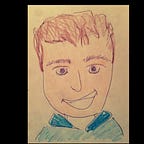What matters to you more than winning?
A book review of Three Ring Circus, the story of the 2000s Los Angeles Lakers dynasty, by Jeff Pearlman
The conventional wisdom about the great Kobe Bryant and Shaquille O’Neal Laker teams of the early 2000s goes like this: Shaq was content for basketball to be one of his many interests, while Kobe was solely focused basketball above anything else. They were a poor fit as teammates, and ultimately went their separate ways, dooming the dynasty.
This is how I remembered it and I don’t think I’m unique. The Lakers were the first great team I knew as an NBA fan. While I have hazy memories of the second Bulls dynasty, I clearly recall the unstoppable force of the Shaq / Kobe Lakers clearly.
After reading Three Ring Circus, Jeff Pearlman’s recent book about these Lakers teams, I realize that my understanding of these teams, why they succeeded and fell apart was wrong. Shaq and Kobe weren’t too different to effectively coexist. Like a basketball episode of the Good Place, they were perfectly calibrated to torture each other.
Three Ring Circus is the story of the Lakers championship teams from the early 2000s. Shaquille O’Neal, the star center. Phil Jackson, the wise coach, and of course, Kobe Bryant, the kid. The book tells the story of how they came together, dominated the league, and ultimately collapsed under the weight of their egos. It’s incredibly well sourced and a must-read for NBA fans. In a way, it acts as a sort of spiritual sequel to The Last Dance, picking the league up and some of the main characters where the documentary series left off.
Because of the period it covers, it also serves as a biography of the first 26 years of Kobe Bryant’s life, from his childhood in Italy through his rape trial in Eagle, Colorado. While Shaq is the key to the team’s dominance on the court, Kobe is the key to understanding what was happening off the court and why this dominant team just couldn’t stay together. He is as arrogant and selfish as Shaq is out of shape, if not more so. If Shaq’s critical flaw is that he isn’t willing to put in the work in the off season to take care of his body and extend his prime, then Kobe’s critical flaw is that he would rather be the star of the team than work with Shaq to win.
I entered the book thinking that Shaq and Kobe were too different to coexist for longer than they did. I left it thinking that they were too similar — ultimately both men only wanted to win on their own terms. For Shaq, this meant enjoying life off the court; for Kobe, this meant being the star of the show with the ball in his hands. Both men expected to be the center of attention in his own way. Unlike MJ and Scottie, they never could manage to get beyond it for the greater good of the team.
The book’s greatest strength is the way that it tells this story for all of the characters that enter it. Del Harris is tactically brilliant, but unable to adapt his style to a new generation of players. Nick Van Excel has all the physical gifts, but he lets little slights from others convince him he’s unvalued. J.R. Rider has all the physical gifts, but can’t figure out the work habits of being a professional. The tension between one’s own strengths and flaws, the desire to do something special as a team and desire to shine as an individual are immensely relatable.
It’s impossible to read this book and not think of Kobe Bryant’s untimely death and the eulogizing that happened afterwards, particularly from other athletes. Even before the alleged rape (which the book strongly suggests should’ve resulted in a conviction), Kobe comes off particularly poorly. While Shaq’s flaws are relatable, Kobe comes off as arrogant to the point of being delusional and cruel to those less talented than he is. The question hanging over the book is, “How did this kid who everyone hated become that guy everyone loved?” That it is never answered is the book’s greatest flaw.
In the preface of the book, Pearlman tells the story of how the book was finished when Kobe’s shocking death happened. He goes out of his way to explain that who a person is from seventeen to twenty six isn’t the sum total of who they are to avoid the charge of speaking ill of the deceased. Answering the question of how and to what extent Kobe changed over the second half of his career would’ve led to a different book and it’s certainly certainly understandable why an author, having just completed a book as thoroughly researched as this one, wouldn’t be eager to start over. But as it is, the ending of the book feels incomplete, like it’s only part one. Despite this, I enjoyed the book immensely. Sign me up for a sequel.
